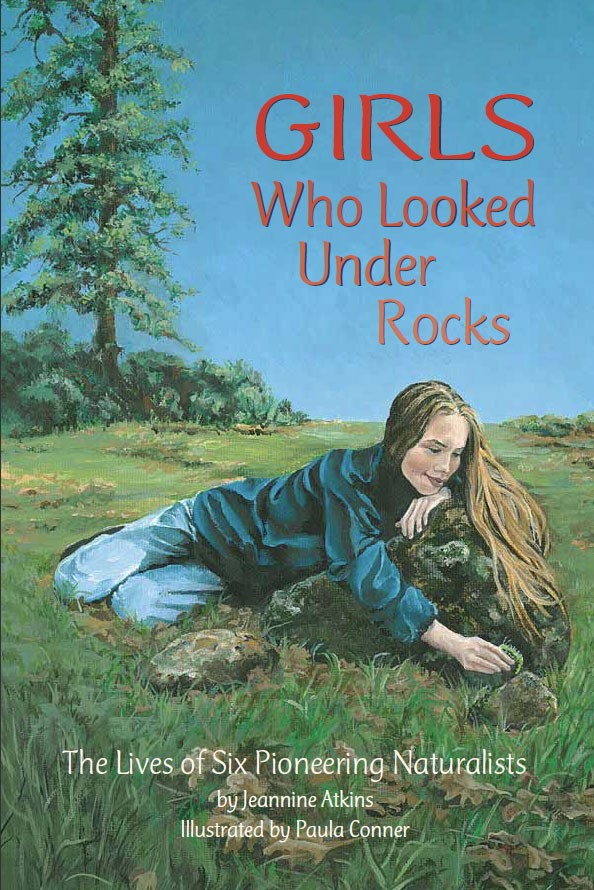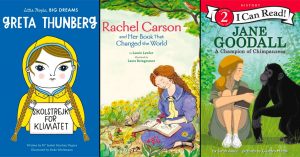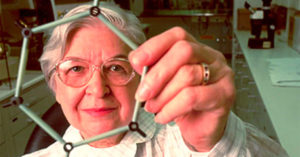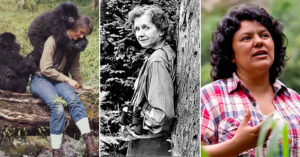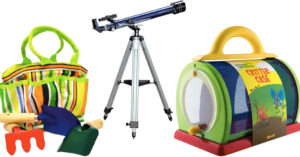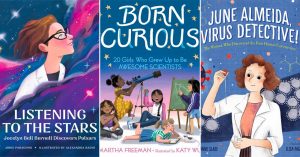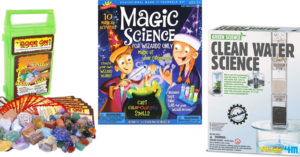Dr. Sherri Mason's groundbreaking research discovered the widespread prevalence of microplastics in the environment.
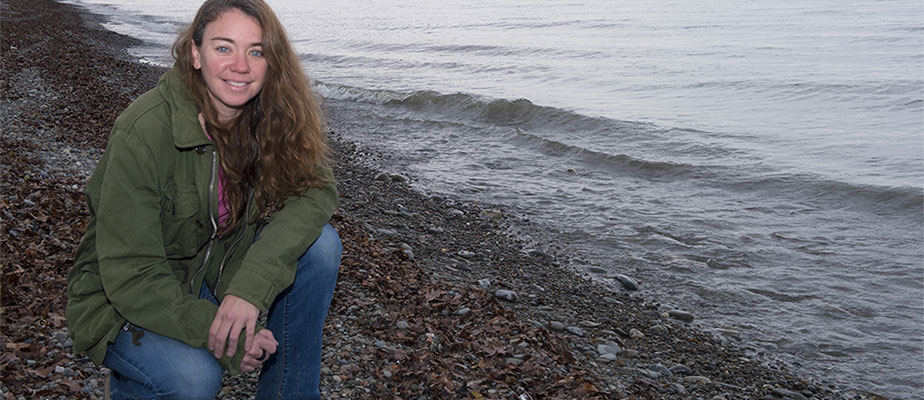 Dr. Sherri Mason, whose research alerted the world to the widespread prevalence of microplastics, has been awarded a Heinz Award for Public Policy for her groundbreaking work to address this growing health and environment problem. Mason was the first scientist to research and identify microplastics pollution in the Great Lakes, the largest freshwater system in the world. Her research brought international attention to the threats posed by microplastics, leading to state and federal bans on microbeads, tiny bits of plastic used in exfoliating scrubs and washes that Mason discovered were accumulating in the environment and the food chain. "Sherri’s research has made the issue of plastic pollution real and present for everyone," said Teresa Heinz, Chairman of the Heinz Family Foundation. "Her ongoing work can be an important key to ending the steady accumulation of plastics in our environment."
Dr. Sherri Mason, whose research alerted the world to the widespread prevalence of microplastics, has been awarded a Heinz Award for Public Policy for her groundbreaking work to address this growing health and environment problem. Mason was the first scientist to research and identify microplastics pollution in the Great Lakes, the largest freshwater system in the world. Her research brought international attention to the threats posed by microplastics, leading to state and federal bans on microbeads, tiny bits of plastic used in exfoliating scrubs and washes that Mason discovered were accumulating in the environment and the food chain. "Sherri’s research has made the issue of plastic pollution real and present for everyone," said Teresa Heinz, Chairman of the Heinz Family Foundation. "Her ongoing work can be an important key to ending the steady accumulation of plastics in our environment."
Mason, a professor of chemistry and chair of the department of geology and environmental science at the State University of New York in Fredonia, originally researched microplastic concentrations in the Great Lakes, but she's since studied ecosystems worldwide — and she says that "every environmental compartment in the world that we’ve looked in, and we’ve gone to remote lakes in the middle of Mongolia... we still find microplastics." In a recent study, she even found that microplastics are now present in most drinking water, including in nearly every brand of bottled water from nine countries. "We found [plastic] in bottle after bottle and brand after brand," says Mason. "It's not about pointing fingers at particular brands; it's really showing that this is everywhere, that plastic has become such a pervasive material in our society, and it’s pervading water — all of these products that we consume at a very basic level."
Mason has also studied fibers from the fleece fabric commonly used for clothing and blankets, and showed that those fibers, which shed during laundering, also slip through filtration systems at wastewater treatment plants and end up in water sources. There is also speculation that many fibers are vented outdoors while drying, which may contribute to growing prevalence of microplastic in the air. One study in Paris studying microplastic contamination estimated that 3 to 10 tons of microplastics now fall on the city annually. These tiny fibers pose the same environmental risks as microbeads, and just as with microbeads, Mason says that the manufacturers need to take responsibility for addressing the problem: "If industry is going to manufacture particular goods, they need to be responsible for making sure that those goods get disposed of properly."

Mason's alarming findings spurred the passage of several state and federal policies to address the growing microplastic crisis, most notably the federal Microbead-Free Waters Act, which was signed by President Barack Obama in 2015. The law banned the manufacture and sale of rinse-off cosmetic products containing plastic microbeads; it's estimated that as of 2015, 8 trillion plastic microbeads polluted US waterways. Canada and New Zealand followed with similar bans in early 2018, and the United Kingdom, Ireland, Italy, and Sweden are rolling out bans over the next two years. While such legislation was an important first step, more action needs to be taken according to Mason. "In the United States' water I'd say this is taking care of about 15 percent of the plastic pollution problem," she observes. "We've got to celebrate that but be aware of the fact that this is the first step in a mountain of plastic pollution that we really need to contend with."
The need for action is even more urgent given how little is understood about the health impacts of microplastics, even though most people regularly consume them. “We have enough data from looking at wildlife, and the impacts that it’s having on wildlife, to be concerned,” says Mason. “If it’s impacting [wildlife], then how do we think that it’s not going to somehow impact us?” She explains that at this early stage of research into the human health impacts, scientists believe there are two principle health concerns: the fact the microplastics are known to contain and absorb toxic chemicals, including endocrine disruptors, neurotoxins and carcinogens, that are then released in the body and that very small or nanoparticle-sized pieces of plastic may be able to migrate around the body with unknown effects. Mason observes that it's "worrying" that these small plastic pieces may leave the gastrointestinal tract and enter organs; "imagine putting little pieces of plastics between the synapses of your brain," she says.
For her research and its impact on alerting policy makers and the public to the hazards of microplastics, Mason received the prestigious Heinz Award in 2018 which recognizes "individuals whose impact on regulations and policies has resulted in the betterment of society" and includes a $250,000 cash award. While the scale of the problem can seem daunting given the vast amount of global plastic pollution, Mason encourages people to see her research not as discouraging, but hopeful.
“I absolutely believe that there is hope," she asserts, "because the vast majority of the plastics we use are completely unnecessary. In most communities in developed parts of the world, we have access to good, clean tap water, and have no need to buy bottled water. It’s the marketing that has led us to believe that tap water is dirty. Instead we should be investing in infrastructure to ensure everyone has access to clean water... Even the most mundane changes to our habits can have an impact on the amount of plastic entering the environment. Eliminating the use of plastic bags, straws or plastic utensils individually may not seem like a lot, but it adds up when you consider that there are seven billion of us on the planet.”
To foster children's respect for the environment, visit our special feature on the Top Children's Books on the Environment, or browse the recommended titles below.
Children's Books About Environmental Issues
The EARTH Book
The EARTH Book
"I take care of the earth because I know I can do little things every day to make a BIG difference." This book draws direct connections between suggestions for environmentally-friendly life and the way those actions protect the Earth — using both sides of the paper, for example, means fewer trees cut for paper, which also protects the wildlife that lives within those trees. Best-selling author / illustrator Todd Parr’s signature art style is colorful and fun — and printed on recycled paper with soy inks. The book also includes a poster full of reminders of how kids can take care of the Earth every day.
Life in the Ocean
The Story of Oceanographer Sylvia Earle
Life in the Ocean
The Story of Oceanographer Sylvia Earle
As a young girl swimming in the Gulf of Mexico, Sylvia Earle developed a passion for the sea and the life within it. As an adult, she would design new submersibles, swim with the whales, and do deep-water walks in special dive suits. Throughout, Earle has explored one of the most mysterious places still left on Earth: our vast oceans. And as Time Magazine's first Hero for the Planet — who is affectionately referred to as the Sturgeon General by colleagues — she is one of the most passionate voices for protecting what she calls "the blue heart of the planet." This exquisite picture book biography will fascinate young readers and spark their interest in learning more about Earle and the ocean she strives to protect.
Rachel Carson and Her Book that Changed the World
Rachel Carson and Her Book that Changed the World
As a shy young woman, Rachel Carson found joy and purpose in studying the creatures all around her. Her articles and books about marine life made her a best-selling author, but it was her groundbreaking book Silent Spring, about the effects of the pesticide DDT on wild animals and birds, that turned her into a household name — and helped found the modern environmental movement. Written for the fiftieth anniversary of Silent Spring's publication, this thoughtful picture book shows how a quiet and dedicated scientist changed the way people thought of their effects on the Earth. For two more picture books about Carson, check out Rachel Carson: Preserving a Sense of Wonder and Rachel: The Story of Rachel Carson.
One Plastic Bag
Isatou Ceesay and the Recycling Women of the Gambia
One Plastic Bag
Isatou Ceesay and the Recycling Women of the Gambia
In Gambia, when people used woven baskets, they would toss them out when the broke, and the baskets would break down. But when they did the same thing with plastic bags, the bags never went away and soon they littered the entire country. It was Isatou Ceesay's innovative idea to recycle the bags by crocheting them into purses. The women involved in her project were able to earn money selling their creations and the streets were soon clean again. This real-life story of a clever woman's solution to both an ecological challenge and a way to find employment for local women is sure to inspire young readers.
Who Was Rachel Carson?
Who Was Rachel Carson?
Rachel Carson seemed like an unusual figure to change the world: a quiet woman working in the Bureau of Fisheries, she became a best-selling author for her books about nature. And then she dropped a bombshell: Silent Spring, a book about the effects of indiscriminate use of DDT and other pesticides. Carson would suffer vicious attacks from the chemical industry over her book, but she would also launch the modern environmental movement — both in America and around the world. This book from the popular Who Was? biography series brings this dedicated woman to life for middle grade readers.
Sea Turtle Scientist
Sea Turtle Scientist
Kimberly Stewart is known as the Turtle Lady of St. Kitts for her devotion to preserving and studying the leatherback sea turtle. Although the 800-pound adult turtles don't look like they need protecting, only one in a thousand sea turtle eggs laid on the beach will reach adulthood. So Stewart is not only collecting data to understand the turtles better, but also sharing her knowledge with local residents so that they can find sources for food and income that don't risk the species' survival. This fascinating entry in the Scientists in the Field series uses dramatic photographs to show how Stewart is helping scientists and the local community to pair up to protect the species.
Girls Who Looked Under Rocks
The Lives of Six Pioneering Naturalists
Girls Who Looked Under Rocks
The Lives of Six Pioneering Naturalists
For these six women, curiosity and a passion for science drove them to overcome obstacles and prejudices in order to share their fascinating discoveries about the natural world! Jeannine Atkins discusses the childhoods and careers of six very different women — Maria Merian (b.1647), Anna Comstock (b.1854), Frances Hamerstrom (b.1907), Rachel Carson (b.1907), Miriam Rothschild (b.1908), and Jane Goodall (b.1934) — all of whom became renowned scientists, artists and writers. An excellent resource for students and a fascinating read for young science lovers, this book reminds readers that amazing discoveries can be found in surprising places.
American Experience: Rachel Carson's Silent Spring
American Experience: Rachel Carson's Silent Spring
Rachel Carson was a biologist for the federal government when she first noted the effects of the unregulated use of pesticides and herbicides, especially DDT. Magazines, afraid of losing advertising, refused to publish her articles, and when she published her book Silent Spring in 1963, she was viciously attacked and called "an ignorant and hysterical woman." However, her book — and the warning within it — sparked the modern environmental movement. This documentary about Rachel Carson's life and work includes historical footage, interviews, and more, to help teach a new generation the significance of Carson's Silent Spring
Green Science Clean Water Science Kit
Green Science Clean Water Science Kit
Learn all about what it takes to keep our water clean with this science kit from 4M's Green Science line! Kids will learn about water filtration, desalinization, basic distillation and solar pasteurization. The kit includes a detailed instruction booklet and the majority of components necessary to complete the experiments included; all that you provide are common household items. Along the way, kids will gain a new appreciation for how our day-to-day choices affect water quality — and how important it is to take care of our fresh water.















